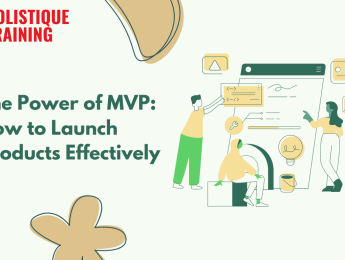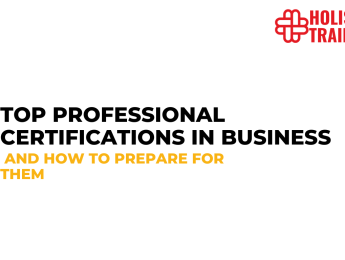- Table of Contents
- Introduction
- What Is a Business Coaching Framework?
- The Importance of Business Coaching Models
- Structure and Clarity
- Goal Alignment
- Enhanced Self-Awareness
- Strategic Thinking and Decision-Making
- Accountability and Progress Tracking
- Consistent Coaching Experience
- The GROW Coaching Model
- Goal
- Reality
- Options
- Will
- The STEPPA Coaching Model
- Story
- Target
- Explore
- Possibilities
- Plan
- Action
- How to Choose the Best Business Coaching Model
- Alignment with Goals
- Flexibility and Adaptability
- Applicability to Context
- Research and Evidence
- Compatibility with Values
- Accessibility of Resources
- Feedback and Reviews
- 9 Business Coaching Skills Every Leader Needs
- Active Listening
- Powerful Questioning
- Empathy and Emotional Intelligence
- Feedback and Feedforward
- Goal Setting and Planning
- Building Trust and Rapport
- Challenging Assumptions and Beliefs
- Accountability and Commitment
- Cultural Sensitivity
- Conclusion
Introduction
In the fast-paced and dynamic world of business, leaders face numerous challenges that require constant growth and adaptation. To navigate these obstacles successfully, many turn to business coaching models as a valuable resource. These models provide structured frameworks and strategies to enhance leadership skills, optimise decision-making, and foster personal and professional development. In this comprehensive guide, we will delve into the concept of a business coaching model, explore two popular models - the GROW Coaching Model and the STEPPA Coaching Model, discuss the factors to consider when choosing a coaching model, and highlight nine essential coaching skills every leader needs to thrive.
What Is a Business Coaching Framework?
A business coaching framework is a systematic approach that enables leaders to develop their skills, overcome challenges, and achieve their goals. It provides a structured process for coaching engagements, offering guidance and direction to both the coach and the coachee. These frameworks act as a roadmap, fostering clarity and accountability throughout the coaching relationship. By leveraging a well-defined coaching model, leaders can unlock their potential, enhance their performance, and drive sustainable growth.
The Importance of Business Coaching Models
Business coaching models play a crucial role in leadership development and organisational growth. Here are some key reasons why having a business coaching model is important:
Structure and Clarity
A coaching model provides a structured framework that guides both the coach and the leader through the coaching process. It offers a clear roadmap, ensuring that coaching conversations remain focused, goal-oriented, and productive. The model establishes a foundation for effective communication, enabling the coach to ask relevant questions and the leader to explore their thoughts and options systematically.
Goal Alignment
A business coaching model helps leaders align their goals and aspirations with the organisation's objectives. By settingSMART (specific, measurable, and attainable) goals, leaders can direct their efforts towards outcomes that contribute to organisational success. The coaching model ensures that the coaching conversations revolve around these goals, enabling leaders to develop action plans and track progress effectively.
Table 1: SMART goals
Enhanced Self-Awareness
Coaching models facilitate self-reflection and self-awareness. They encourage leaders to examine their strengths, weaknesses, values, and beliefs, fostering a deeper understanding of their leadership style and impact. Through guided questioning and exploration, leaders gain insights into their behaviours, motivations, and areas for improvement. This heightened self-awareness enables leaders to make conscious choices and drive personal growth.
Strategic Thinking and Decision-Making
A coaching model prompts leaders to think strategically and explore multiple perspectives. It encourages leaders to analyse complex situations, consider various options, and make informed decisions. By leveraging a coaching model, leaders can enhance their critical thinking skills, develop creative problem-solving approaches, and navigate uncertainties with confidence.
Accountability and Progress Tracking
Having a coaching model establishes a sense of accountability for both the leader and the coach. The model helps leaders set clear objectives, define action plans, and track their progress towards their goals. It ensures that leaders take ownership of their growth and development, holding themselves accountable for their commitments. Regular coaching sessions provide opportunities to review progress, assess outcomes, and make adjustments if necessary.
Consistent Coaching Experience
When an organisation adopts a specific coaching model, it ensures a consistent coaching experience across the organisation. Regardless of who the coach is, leaders can expect a similar structure, process, and level of support. This consistency allows leaders to build trust and rapport with their coaches, as they become familiar with the coaching model and its benefits.
In summary, a business coaching model provides structure, clarity, and direction to coaching engagements. It empowers leaders to align their goals, enhance self-awareness, make strategic decisions, and maintain accountability. In addition,research shows that companies that implement a formal coaching procedure experience a significant advantage, achieving 91.2% of their total quota compared to businesses that rely on an unstructured coaching method, which only reach 84.7% of their quota. These findings highlight the importance of adopting a systematic coaching approach in driving performance and achieving organisational targets.
The GROW Coaching Model
One of the most widely recognised coaching models is the GROW Coaching Model. Developed by Sir John Whitmore, this model offers a simple yet powerful structure for goal-oriented coaching conversations. GROW stands for Goal, Reality, Options, and Will. Let's take a closer look at each step of the GROW Coaching Model and explore how it can be applied:
Goal
The first step of the GROW model involves setting clear and specific goals. The coach works with the leader to identify what they want to achieve and ensures that the goals are challenging yet attainable. For example, a leader might set a goal to increase team productivity by 20% within the next six months.
Reality
In this phase, the coach helps the leader explore the current reality and assess the gap between the current situation and the desired outcome. The leader examines their strengths, weaknesses, and any external factors that may impact goal attainment. For instance, the leader might reflect on the team's current performance, resource constraints, or any barriers they need to overcome.
Options
Once the leader has a clear understanding of the current reality, the coach assists in generating potential options and solutions. This step involves brainstorming ideas and exploring different approaches to bridge the gap between the current situation and the desired goal. The coach encourages creativity and open-mindedness. For example, the leader might consider implementing new processes, allocating additional resources, or providing additional training to the team.
Will
The final step of the GROW model focuses on creating commitment and developing an action plan. The leader identifies specific actions they will take to move towards their goal, along with a timeline and measurable indicators of progress. The coach supports the leader in setting milestones, overcoming potential obstacles, and fostering accountability. For instance, the leader might commit to implementing a new project management system, scheduling regular team meetings, and providing ongoing feedback and recognition.
By following the GROW Coaching Model, leaders can gain clarity, enhance self-awareness, and create actionable steps to achieve their goals. This model promotes a structured and systematic approach to coaching conversations, ensuring that leaders remain focused and motivated throughout their development journey.
It's important to note that the GROW Coaching Model is versatile and can be adapted to various coaching contexts and goals. Coaches can use probing questions, active listening, and feedback techniques to facilitate each step of the GROW model effectively. The model encourages leaders to think critically, explore alternative perspectives, and take ownership of their growth and development.
The STEPPA Coaching Model
Another effective coaching model is the STEPPA Coaching Model. Created by Simon Osborne, STEPPA stands for Story, Target, Explore, Possibilities, Plan, and Action. This model focuses on helping leaders gain clarity, develop effective strategies, and take purposeful action. Let's dive deeper into each step of the STEPPA Coaching Model:
Story
The Story phase involves the coach encouraging the leader to share their narrative. The leader reflects on their past experiences, successes, challenges, and personal values. This step sets the foundation for self-reflection and understanding, allowing the coach to grasp the leader's unique context. For example, the leader might share stories about their career progression, lessons learned from past leadership roles, and pivotal moments that have shaped their leadership style.
Target
Once the leader has shared their story, the coach helps them identify their target or desired outcome. This step involves setting specific and meaningful goals that align with the leader's aspirations and the organisation's objectives. The coach supports the leader in defining what success looks like and articulating their vision. For instance, the leader might target improving their communication skills, fostering a more inclusive work environment, or launching a new product line.
Explore
In this phase, the coach facilitates exploration by asking thought-provoking questions and encouraging the leader to explore various perspectives and possibilities. The leader considers different options, potential obstacles, and alternative strategies. This step promotes creative thinking and expands the leader's mindset. For example, the leader might explore different leadership styles, consider the impact of emerging technologies, or examine industry trends.
Table 2: STEPPA model
Step | Description |
Story | Coachee shares personal narrative. |
Target | Define specific and meaningful goals. |
Explore | Encourage diverse perspectives. |
Possibilities | Generate and evaluate solutions. |
Plan | Develop a concrete action plan. |
Action | Implement, monitor, and adjust plan. |
Possibilities
Building upon the exploration phase, the coach helps the leader generate a range of possibilities and solutions to achieve their target. The leader evaluates each option, considering the feasibility, potential benefits, and alignment with their values and goals. This step encourages the leader to think critically and consider multiple perspectives. For instance, the leader might explore the possibility of forming strategic partnerships, implementing agile methodologies, or leveraging data analytics for informed decision-making.
Plan
Once the leader has identified the most viable options, the coach assists in developing a concrete plan of action. The leader sets clear objectives, defines key milestones, and creates a detailed roadmap to achieve their target. The plan includes specific tasks, responsibilities, and timelines. The coach helps the leader prioritise actions, address potential challenges, and create a sense of accountability. For example, the leader might develop a plan to allocate resources, assign team members to specific tasks, and establish regular progress review meetings.
Action
The final step of the STEPPA Coaching Model emphasises taking intentional action. The leader executes the plan, monitors progress, and adjusts strategies as needed. The coach provides ongoing support, feedback, and guidance to ensure the leader stays on track. This step focuses on building momentum and maintaining motivation. For example, the leader might implement new processes, track key performance indicators, and regularly assess progress toward their target.
TheSTEPPA Coaching Modelempowers leaders to gain clarity, explore possibilities, and develop actionable plans. It encourages a holistic approach to coaching, taking into account the leader's story, aspirations, and the broader organisational context. By following the STEPPA model, leaders can navigate complexities, make informed decisions, and achieve sustainable growth.
How to Choose the Best Business Coaching Model
Choosing the right business coaching model is crucial for maximising the benefits of coaching engagements. Consider the following factors when selecting a coaching model:
Alignment with Goals
When selecting a coaching model, it's essential to ensure that it closely aligns with your specific coaching goals and objectives. Consider the scope of your goals—whether they are focused on individual leadership development, team performance enhancement, or broader organisational transformation. A coaching model that directly supports your objectives will be more effective in achieving the desired outcomes.
Flexibility and Adaptability
The level of flexibility and adaptability offered by a coaching model is crucial. Business environments are constantly evolving, and coaching needs may change accordingly. Look for a coaching model that can be tailored to suit your unique needs and challenges. A model that can flexibly accommodate shifts in priorities and circumstances will be more valuable over time.
Applicability to Context
Consider the context in which your organisation operates. Industries vary significantly, as do organisational cultures and leadership styles. Evaluate whether the coaching model is well-suited to your business context. For instance, a coaching model that has a track record of success in your industry or is adaptable to the specific cultural nuances of your organisation may be more effective.
Research and Evidence
It's essential to assess the research and evidence supporting a coaching model. Look for models that have been rigorously tested and validated in real-world scenarios. Models that have a strong empirical foundation are more likely to yield positive results and provide a sense of confidence in their effectiveness.
Compatibility with Values
The alignment of the coaching model with your personal and organisational values is a critical consideration. Ensure that the model resonates with your ethical and moral principles. Coaching models that are in harmony with your values will facilitate a more authentic and meaningful coaching experience.
Accessibility of Resources
Consider the availability of resources related to the coaching model. Are there readily accessible training materials, books, and experienced coaches who are well-versed in the model? Having access to such resources can significantly enhance the coaching experience and make it easier to implement the model effectively.
Feedback and Reviews
Seek feedback from individuals and organisations that have used the coaching model. Explore reviews, testimonials, and case studies to gain insights into its effectiveness in practical applications. Hearing about the experiences and successes of others who have used the model can provide valuable guidance in your decision-making process.
By considering these factors, leaders can make an informed decision when selecting a business coaching model that best suits their needs and aspirations.
9 Business Coaching Skills Every Leader Needs
While a coaching model provides a structured framework, effective coaching also relies on the skills of the coach. Here are nine essential business coaching skills every leader should strive to cultivate:
Active Listening
Active listening goes beyond merely hearing words; it involves fully comprehending and empathising with the coachee's perspectives, concerns, and aspirations. Effective leaders listen with undivided attention, allowing the coachee to feel heard and valued. They use non-verbal cues, such as nodding and maintaining eye contact, to signal their engagement and understanding.
Powerful Questioning
In addition to asking questions, leaders should aim to pose thought-provoking questions that stimulate deep reflection, creativity, and the exploration of new insights. These questions encourage coachees to delve into their thoughts and emotions, promoting self-discovery and problem-solving.
Empathy and Emotional Intelligence
Empathy involves not only understanding but also relating to the coachee's emotions, experiences, and challenges. Leaders with high emotional intelligence can put themselves in the coachee's shoes, providing support and guidance that is attuned to their feelings. They show empathy by acknowledging emotions and demonstrating understanding without judgement.
Feedback and Feedforward
Effective leaders provide constructive feedback that focuses on both past performance and future improvement. They offer specific, actionable feedback that helps coachees identify areas for growth while also emphasising forward-looking suggestions. This approach empowers coachees to learn from their experiences and apply insights to future actions.
Goal Setting and Planning
Leaders assist coachees in setting SMART (Specific, Measurable, Achievable, Relevant, Time-bound) goals and developing actionable plans to achieve them. They guide coachees in breaking down long-term objectives into manageable steps, ensuring that goals are well-defined, trackable, and aligned with their vision.
Building Trust and Rapport
Trust is the cornerstone of effective coaching relationships. Leaders establish trust by creating a safe and confidential environment where coachees can openly share their thoughts, challenges, and vulnerabilities. Building rapport involves developing a genuine and supportive connection with coachees, promoting open dialogue and mutual respect.
Challenging Assumptions and Beliefs
Effective leaders encourage coachees to explore and challenge their existing assumptions and beliefs. They create an environment where coachees feel comfortable questioning long-held notions and embracing new perspectives. This skill fosters personal and professional growth by enabling coachees to adapt and evolve.
Accountability and Commitment
Leaders hold coachees accountable for their actions and commitments toward personal and professional development. They ensure that coachees follow through on their plans and stay committed to their goals. This accountability promotes a sense of responsibility and ownership in coachees.
Cultural Sensitivity
In an increasingly diverse and globalised world, leaders must recognise and respect diverse cultural backgrounds, perspectives, and values. Cultural sensitivity involves understanding and appreciating the cultural context of coachees and adapting coaching approaches to be inclusive and respectful of cultural differences.
Conclusion
Business coaching models provide leaders with invaluable guidance, structure, and support to enhance their leadership abilities and achieve their goals. By choosing an appropriate coaching model and developing essential coaching skills, leaders can unlock their full potential, drive organisational success, and create a culture of continuous growth and development. Embrace the power of business coaching models, and empower yourself to become a remarkable leader in the ever-evolving business landscape.

























